2019 Scottish Birding Review
The Scottish Highlands enjoyed unusually mild weather to begin the year, our ‘Hogmany Celebration’ group kicking things off in style with sightings of all four Grouse. Capercaillie in particular showed well in the private estate many weeks throughout January, new guide George forging a reputation as top Caper spotter! Our ‘New Year Birdlist Booster’ week is always a popular trip, and with sightings of White-billed Diver, Snow Goose, American Wigeon and Waxwings, many a year list got off to a great start. Ian’s new ‘Southern Scotland, Coast to Coast trip’, recorded an impressive 113 species – the highest of the month and included a smart drake Surf Scoter and flocks of the only regularly wintering Taiga Bean Geese in Scotland.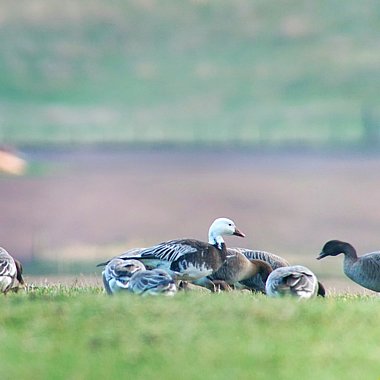
The first real cold snap of the year greeted the BBC Winterwatch team and arriving with them, a number of cold weather specialists. Birds virtually on our doorstep in early February included flocks of Bramblings and an early morning walk around Nethy Bridge often yielded Waxwings too, and of course the local Dipper. ‘Birders Blast’ holidays are always fun and with local birds continuing to oblige there was often plenty of time to explore Moray Firth and Black Isle coasts to add wintering American Wigeon and/or Green winged Teal. By mid-month warmer climes returned and Crested Tits were heard singing in the forests – certainly not what were accustomed to on ‘Highland Winter Birding’. Always popular, our first jaunt north into Caithness brought sightings of Ring-necked Duck, Smew, Iceland Gull, Great Grey Shrike and with scores of divers, geese, seaduck and brilliant views of Hen Harriers and Short-eared Owls over the moors its easy to see why.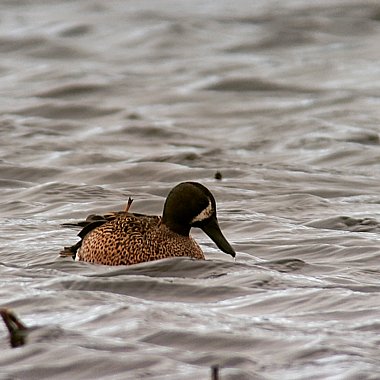
Displaying raptors are always a delight and in early March, Golden Eagle and Goshawk were especially active. Attractive Shorelarks were a great addition for our ‘Highlands and East Coast’ group, meanwhile on the other side of Scotland, Toby and our ‘Mull & Islay’ group were enjoying 18 Golden and 12 White-tailed Eagles in one day – surely a record?! The discovery of a smart, drake Blue-winged Teal on the west coast later in the month couldn’t have been timed better, our ‘Highland and West Coast’ group venturing over to see it the very next day.
Remaining in situ for the rest of the spring, it and another long stayer, the drake Black Duck were both regulars in April. Also regular (though irregularly seen), was the drake King Eider on the Moray coast, giving itself up with perseverance to our ‘Spring into Scotland’ and ‘Highlands and Skye’ groups. Late-April sees Spring migration in full swing, and with it comes our first venture to ‘North Ronaldsay and Orkney for birders’ ….and once again Heatherlea hit the birding headlines! After seeing the first ever Red-winged Blackbird in 2017, this time it was Britain’s sixth Mourning Dove which showed superbly for Toby and company, and as the rarest bird of year, no wonder the guides are queueing up to lead what is rapidly becoming labelled our luckiest trip! 
May is always a busy time at Heatherlea, with more trips around Scotland than any other month! And there were many great birds too - the Blue-winged Teal and King Eider leading the way for local groups, while a day trip to Aberdeenshire added Common Crane to our birding year. Corncrake features highly this month and we were pleased to confirm all who visited the ‘Outer Hebrides in Spring’ or joined our ‘Highlands and Corncrake’ trips enjoyed great views. Red-necked Phalaropes are also doing well with sightings both here and on our ‘Shetland in Spring for birders’. Buff-breasted Sandpiper and Wryneck were nice finds for Mark and that group, and across the following ‘Shetland Island Explorer’ trips, plenty of seabirds, scarce breeders and more unusual migrants including Bluethroat, Red-backed Shrike, Icterine Warbler, Common Rosefinch and best of all a Lesser Yellowlegs were seen. 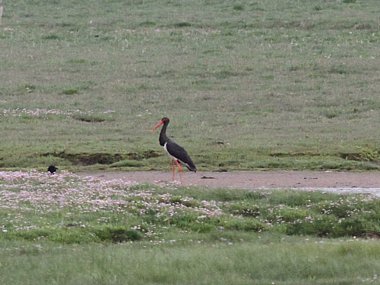
On the last day of the month, George, Jonny and ‘High Season across the Highlands’ participants enjoyed a great encounter with a Rough-legged Buzzard in a local Glen. And entering June, on the same holiday a Long-tailed Skua on the west coast and Ruddy Shelduck on the east, sums up just how varying the birding in our region can be. In fact, it was a good month for Heatherlea with most groups enjoying at least one rarity of one sort or another. Highlights included an adult Pomarine Skua off the Mull ferry on ‘Southern Hebrides’, Rosy Starling on ‘Orkney island Explorer’, a Black Stork on ‘Highlands and Orkney’, a smart, singing Red-breasted Flycatcher on ‘Islands on the Edge’ and perhaps the best of the bunch – a Great Spotted Cuckoo on Iona for Mike and his bespoke group. It was great to chip in with a few finds of our own too, none better than the Outer Hebrides second ever Stone Curlew discovered by George, Ian and our ‘Outer Limits in Summer’ group on the Isle of Lewis.
July saw the debut of ‘Highlands and Bass Rock’ and along with a great experience with the worlds largest Gannetry we explored new ground on the Lothian coast and saw 5 Spoonbill. Scott’s ‘Ultimate Outer Hebrides’ group contributed our second Rosy Starling of the year and an unseasonal Shorelark was a bonus on our ‘Orkney in High Summer’ holiday. Our annual voyage to ‘St Kilda and the Hebrides’ onboard the MV Cuma connected nicely with Hirta’s resident Snowy Owl, and we hit the jackpot with ‘mind-blowing’ views of a Humpback Whale in Scottish waters from our boat. A good period for cetaceans, memorable encounters with feeding Minke’ Whales, Common Dolphins and Harbour Porpoise in the Minch were also had by those on ‘Highlands and Wester Ross’.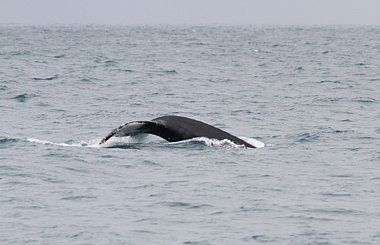
It was good to see local birds coming to the fore in August, and with over 120 bird species and 15 mammals on both of our ‘Easy Walking in the Highlands’ weeks, there was certainly plenty of variety. Birds of Scandinavian origin began moving south through the Northern Isles towards the end of the month, our ‘North Ronaldsay and Orkney in early autumn’ group timing it well again with Melodious, Barred and Greenish Warblers all in the space of a few days!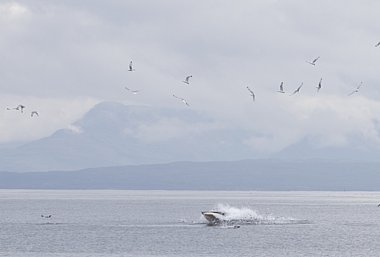
Westerly winds now began to dominate, so it came as no real surprise to our ‘Outer Hebrides in early Autumn’ group when they found a Pectoral Sandpiper on a North Uist on Septembers first day. Further American waders came in the shape of White-rumped Sandpipers as individuals found Scott’s groups (or via versa) on opposite sides of the country, firstly in Aberdeenshire on our ‘20 Scottish Specials’ holiday and then in the Hebrides on ‘Outer Limits’. It was a great month for seabirds too, stormy conditions resulting in Sooty Shearwaters and Leach’s Petrels being seen in the Minch on several dates with them, plus juvenile Sabine’s Gull and a stunning encounter with an adult Long-tailed Skua on ‘North Ronaldsay in Autumn for birders’ week. The winds returned to the east towards the month’s end and Yellow-browed, Marsh and Barred Warblers began to show up in Shetland and Orkney. A Red-flanked Bluetail found by George and our second North Ron group was arguably the stand out bird!
‘Shetland in Autumn’ is always a popular destination as autumn progresses, and the impressive roll call of sightings spanning our two week visit to the archipelago in September/October included Spotted Crake, American Golden Plover, Semi-palmated Sandpiper, Bee-eater, Isabelline (Turkestan) Shrike, Short-toed Lark, Siberian Stonechat, Red-breasted Flycatcher, Olive-backed Pipit, Little Bunting, Greenish, Barred and Melodious Warblers. Quality of the highest order, and with Yellow-browed Warblers flicking out of almost every bush and an Orca bonus for our second group, it comes as no surprise that spaces on our 2020 dates are disappearing fast!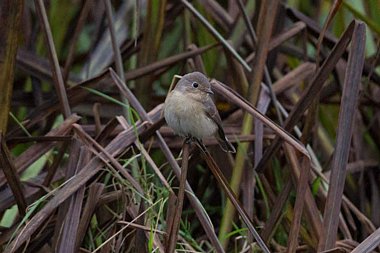
Also featuring in October were another Pectoral Sandpiper on ‘Outer Limits’, and Mike’s ‘Unexplored Orkney’ group connected with a cracking American Golden Plover on Sanday - a nice reward on a rarely visited island. Our annual pilgrimage to ‘Islay and Jura’ proved as productive as ever, Dave and the group finding a Todd’s Canada Goose among scores of Barnacle and Greenland White-fronts, plus the season’s first Glaucous Gull. Closer to home, an excellent series of Capercaillie sightings in the private estate spanning 10 consecutive weeks of the autumn (late-August into November) hinted at a good breeding season for this iconic species. There were eagles galore for both our ‘Highlands and Skye in Autumn’ groups too, the first impressively recording Golden Eagles on all bar one day out in the field!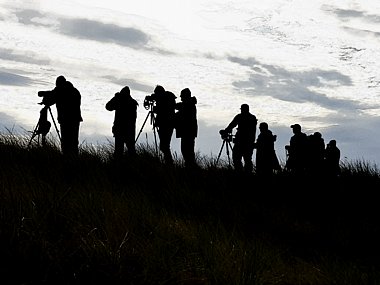
Into November, and the last rarities of the year fell to George and Mark out in Aberdeenshire and our ‘Highland Autumn Birders’, namely Great White Egret and Little Auk. Unusually high numbers of Snow Buntings have also been present on the Moray coast and our autumn ‘Short Breaks’ and ‘Birders Blast’s’ have connected several times. Waxwings have reaped the benefits of a plentiful supply of berries too. Early snow has seen local specialities such as Crested Tit and Ptarmigan performing well too – all great signs for the coming year, and while the Heatherlea season might have come to a close, our guides are still birdwatching so roll on 2020!
